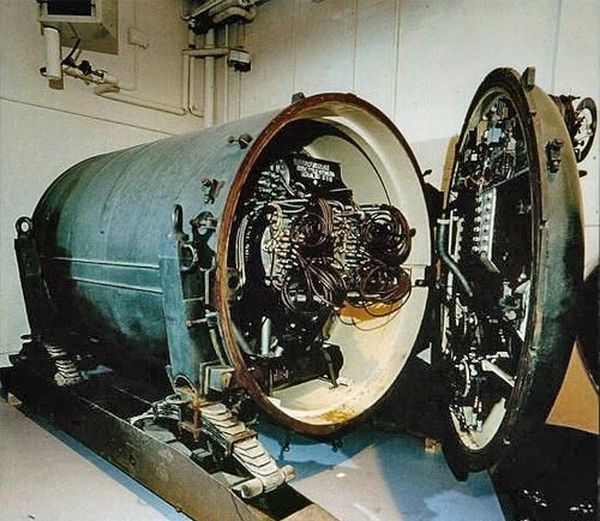Nuclear Weapons 366 - British Designed A Nuclear Landmine During The Early Cold War
blur-peacock.jpg

When we talk about nuclear weapons, we usually mean nuclear missiles and bombs delivering megatons of destruction from half way across the globe. While these have been a great threat for decades, there are also tactical nuclear weapons with low yields that are meant to be used on battlefields against troops and armor instead of cities full of civilians.
There have been designs, some of which were actually built, for nuclear field artillery pieces, nuclear howitzers, nuclear mortars, suitcase bomb, and even nuclear rifles. One problem with these weapons is the need to insure that the explosions they cause will not kill the soldiers who fired them. There have been many designs that were never built because they turned out to be too impractical.
During the Cold War, the NATO forces protecting Europe from the Soviet bloc were seriously outnumbered by the troops available to the Warsaw Pact, the equivalent of NATO for the Soviet nations. If the Soviets invaded Europe, it was assumed that they would come across the North German Plain. NATO forces would probably have to fall back as they were hard pressed by the invading forces. NATO built nuclear rockets and artillery shells to be used against a Soviet invasion. They also designed but did not build a nuclear landmine in the 1950s.
The name of the nuclear landmine project was Blue Peacock. It was designed at the Royal Armament Research and Development Establishment (RARDE) at Fort Halstead in Kent in 1954. In July of 1957, the British Army ordered ten Blue Peacocks for use in Germany in case of a Soviet invasion. However, the Ministry of Defense ultimately canceled the order in February of 1958. One reason for cancelling the order was concern about nuclear fallout beyond the battlefield. Another reason was that there would be serious pollical repercussions from detonating nuclear bombs on German soil.
The first name for the project was Brown Bunny which became Blue Bunny and finally was changed to Blue Peacock. The mine would weigh sixteen thousand pounds. The casing would be pressurized and there were to be tilt switches, both to prevent tampering.
There were three trigger mechanisms suggested for the mines. One would be an eight-day timer of some sort. Another would a wire that ran to a detonator that would be located miles away. And, finally, the mine would detonate if anyone tampered with it.
One of the technical problems that would have to be solved was dealing with cold weather. It was possible that being buried in frozen soil for days might cause deterioration of the electronics that trigger the bomb. There was a suggestion that some chickens could be used to keep the mine warm until needed. They would be sealed into the mine with just enough food and water to last for eight days.
The mines were intended for use on the North German Plain. It was assumed that if the Soviets invaded and pushed the NATO forces back, then the Soviet army would quickly build headquarters, supply depots and other things directly above the buried Blue Peacock mines. When the mines under Soviet installations detonated, ten-kiloton nuclear explosions would destroy what the Soviets had built.
Some amazing and fantastic weapons were developed during the Cold War. The Blue Peacock land mine was just to crazy to even be deployed.